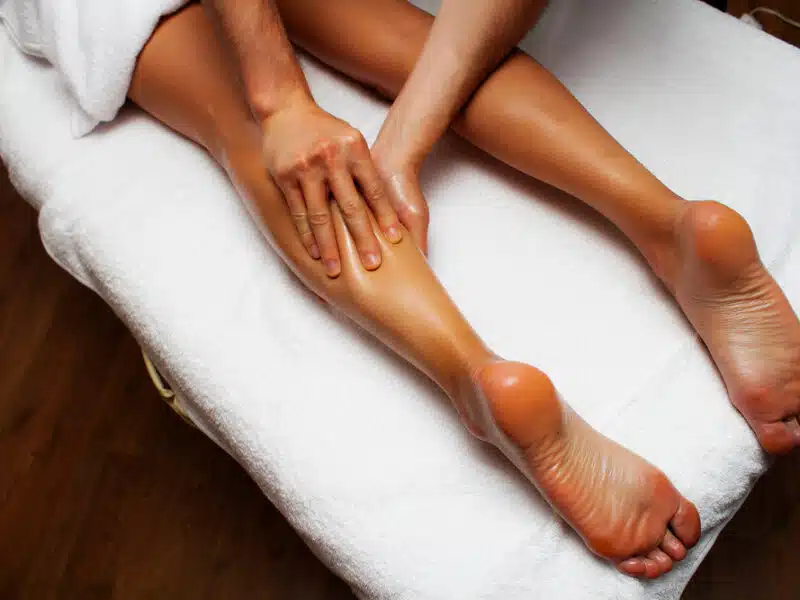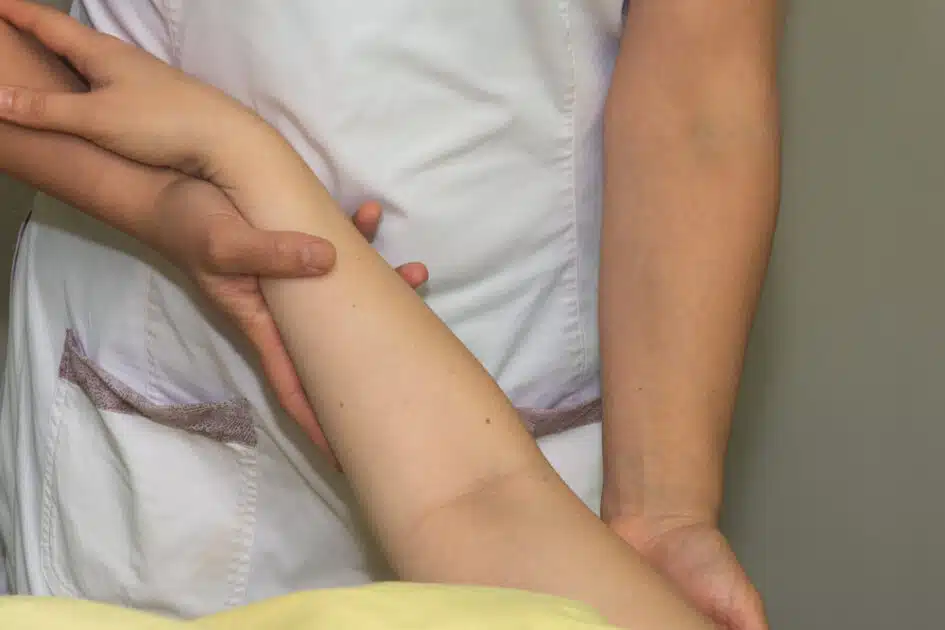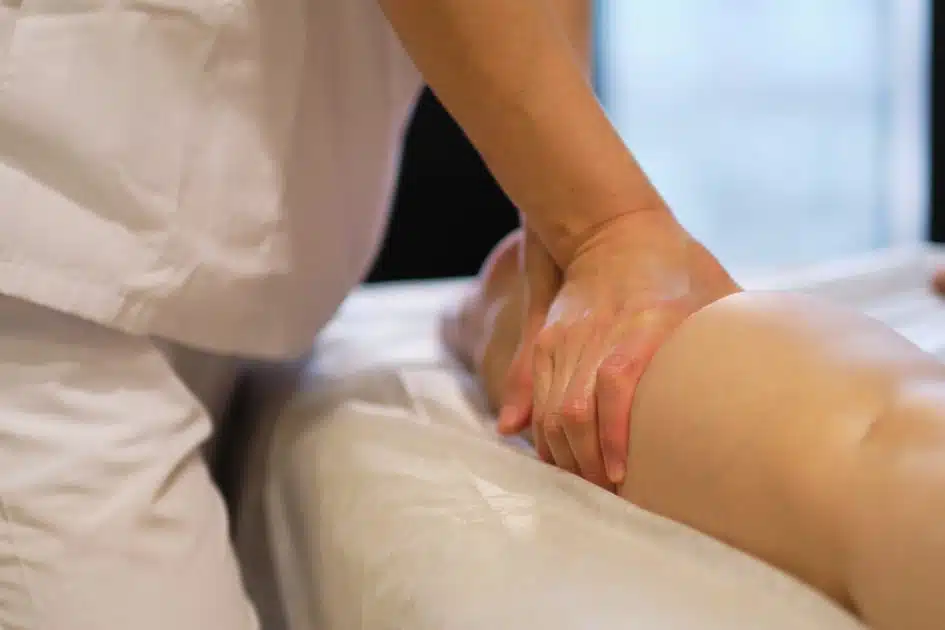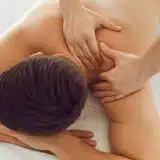How To Do Manual Lymphatic Drainage?

Step-by-Step Guide to Performing Manual Lymphatic Drainage for Improved Circulation and Detoxification
What is Massage 27th Apr, 2023
Lymphatic drainage massage, or manual lymphatic drainage, helps reduce swelling caused by medical treatment or illness that blocks the lymphatic system. This type of massage involves gently manipulating certain body areas to assist lymph flow toward functioning lymph vessels.

In this guide, we’ll take you through the step-by-step process of performing self-MLD, as well as tips and precautions to ensure you get the most out of this powerful therapy. Let’s get started!
Explanation of Manual Lymphatic Drainage (MLD)
Manual Lymphatic Drainage (MLD) is a specialized massage technique that helps to promote the flow of lymphatic fluid out of the affected area, such as swollen limbs caused by lymphedema or other lymphatic diseases. Developed by Dr. Emil Vodder and his wife, Estrid, in 1936 in Paris, MLD has been used for decades as an effective treatment for lymphatic conditions.
The lymphatic system is responsible for removing waste products and toxins from the body, and when it becomes blocked or damaged, lymphedema and other related conditions can occur. MLD aims to improve the activity of lymph nodes and reroute stagnant lymphatic fluid to reduce swelling and inflammation.
MLD is an important component of Complete Decongestive Therapy (CDT), which is a comprehensive treatment program for lymphedema. CDT includes MLD, compression therapy, exercise, and skincare, and has been shown to be effective in reducing lymphedema volume and improving patient mobility and quality of life.
Recommended:
The Power of Hand Massage: Mastering the 4 Techniques for Ultimate Relief and Relaxation
The Advantages of Manual Lymphatic Drainage (MLD)
Manual Lymphatic Drainage (MLD) is a highly effective therapy that offers numerous benefits to individuals with lymphatic diseases and conditions. This technique helps improve lymphatic flow and drainage, reduces swelling and inflammation, relieves pain and discomfort, and enhances immune system function.
Firstly, MLD helps improve lymphatic flow and drainage by stimulating the lymph nodes and promoting the movement of lymphatic fluid. This light, skin-stretching massage helps open up the remaining functioning lymph collectors and move protein and fluid into them, as well as speed up lymph fluid flow through the lymphatics. This improved lymphatic flow and drainage can help reduce the risk of lymphatic diseases, such as lymphedema.
Secondly, MLD is effective in reducing swelling and inflammation. The gentle pressure and rhythmic movements of MLD help to move fluid out of the swollen limb, reducing edema and improving the appearance of the affected area. It is especially useful for individuals who have undergone surgery or experienced trauma that results in post-surgical or post-traumatic edema.
Thirdly, MLD can help relieve pain and discomfort associated with lymphatic diseases and conditions. The light, skin-stretching massage promotes relaxation and stimulates the parasympathetic nervous system, which can help reduce pain, tension, and stress.
Benefits of Manual Lymphatic Drainage (MLD)
- Improves lymphatic flow and drainage
- Reduces swelling and inflammation
- Relieves pain and discomfort
- Enhances immune system function
These benefits make MLD an effective treatment for a variety of conditions including lymphedema, post-surgical swelling, and palliative care. By promoting lymphatic flow and reducing inflammation, MLD can also contribute to overall health and wellness.
Recommended:
Manual Ligament Therapy
Precautions and Contraindications
Here’s some information about precautions and contraindications for Manual Lymphatic Drainage (MLD):
Precautions
- Consultation With a Healthcare Provider: Before undergoing MLD, it’s important to consult with a healthcare provider to determine whether the therapy is appropriate for your individual needs and medical history. This is particularly important for individuals with certain medical conditions or who are taking certain medications.
- Avoidance of Certain Techniques and Areas: Depending on your individual needs, there may be certain MLD techniques or areas of the body that should be avoided to prevent exacerbation of symptoms or complications.
- Monitoring of Skin Condition: Because MLD involves the manipulation of the skin and underlying tissues, it’s important to monitor the skin for any signs of irritation or damage. In some cases, MLD may need to be adjusted or discontinued if skin irritation occurs.
Contraindications
- Active Infection: MLD should not be performed on areas of the body with an active infection or inflammation, as this can exacerbate symptoms and potentially spread the infection.
- Blood Clots: MLD should be avoided in individuals with active blood clots or a history of blood clots, as the therapy can potentially dislodge the clot and cause complications.
- Heart Failure: MLD may not be appropriate for individuals with severe heart failure, as the therapy can increase fluid volume and potentially exacerbate symptoms.
- Cancer: MLD should be used with caution in individuals with cancer, particularly in areas of the body affected by cancer or its treatment.
It’s important to discuss any medical conditions or concerns with a healthcare provider before undergoing MLD to ensure that the therapy is safe and appropriate for your individual needs.
Step-by-Step Guide for Self-MLD
Performing self-manual lymphatic drainage (MLD) can be an effective way to manage lymphedema or promote overall lymphatic health. Here is a step-by-step guide to help you get started:

1. Preparation and Positioning
Find a comfortable, quiet space where you can lie down on a flat surface, such as a bed or yoga mat. Wear loose clothing to allow for movement and avoid any tight-fitting jewelry or accessories. Position yourself on your back with a pillow supporting your head and another under your knees to help relax your lower back.
2. Diaphragmatic Breathing
Begin with deep diaphragmatic breathing to help stimulate lymphatic flow. Place one hand on your abdomen and the other on your chest. Breathe deeply through your nose, allowing your abdomen to rise and your chest to expand. Exhale through your mouth, allowing your chest and abdomen to relax. Repeat for several breaths until you feel calm and centered.
3. Unaffected Area Treatment
Start by treating the unaffected area of your body, such as your neck or opposite arm or leg. This helps create a pathway for the lymphatic fluid to flow more easily. Use gentle, rhythmic strokes with light pressure, moving in a circular motion toward the nearest lymph node. Repeat for several minutes until you feel the area has been adequately treated.
4. Affected Area Treatment
Move on to the affected area of your body, using the same gentle, rhythmic strokes with light pressure. Start at the farthest point from the nearest lymph node and move in a circular motion towards it. Repeat for several minutes until you feel the area has been adequately treated.
5. Summary and Repetition
Finish with a few more deep diaphragmatic breaths, and a quick summary of the areas you treated. Repeat the entire process on a regular basis to help maintain lymphatic flow and manage lymphedema symptoms.
Remember to always consult with your healthcare provider before starting any new self-care regimen, especially if you have any underlying health conditions or concerns. With practice and patience, self-MLD can become an important part of your lymphatic health routine.
Tips for Effective Manual Lymphatic Drainage (MLD)
To effectively perform Manual Lymphatic Drainage (MLD), there are some tips to keep in mind. These tips can help ensure that you are using the correct technique and getting the most out of your treatment:

- Use Gentle Pressure and Slow, Rhythmical Movements: Manual Lymphatic Drainage is a light massage that uses gentle pressure to encourage the flow of lymphatic fluid. It’s important to use slow and rhythmical movements to prevent any discomfort or damage to the lymph vessels.
- Proximal to Distal Technique: When performing Manual Lymphatic Drainage, it’s important to work from the unaffected area toward the affected area. This technique helps to move the lymphatic fluid away from the affected area and towards the lymph nodes where it can be processed and eliminated from the body.
- Proper Hand Placement and Use of Fingers and Palms: Proper hand placement and use of fingers and palms are essential to effective MLD. The therapist or individual performing self-MLD should use their hands to stretch the skin and apply gentle pressure to the lymph vessels. The use of fingers and palms will help to move the lymphatic fluid toward the lymph nodes.
- Gradual Increase in Treatment Duration and Frequency: As with any treatment, it’s important to gradually increase the duration and frequency of MLD. Starting with shorter sessions and working up to longer sessions can help prevent any discomfort or strain on the lymphatic system. It’s also important to monitor your body’s response to the treatment and adjust the frequency accordingly.
By keeping these tips in mind, you can ensure that you are performing MLD correctly and effectively. Remember to consult with a healthcare provider before beginning any new treatment and to monitor your body’s response to the treatment to ensure its safety and efficacy.
Recommended:
What Is Reflexology?
What is a lymphatic drainage massage used for?
Lymphatic drainage massage, also known as manual lymphatic drainage, is a gentle massage technique that helps reduce swelling in your arms and legs caused by lymphedema. This can be common for those recovering from breast cancer surgery.
Lymphedema occurs when fluid remains in your tissues after your cardiovascular system circulates blood. This excess fluid, known as lymph, typically flows back to your heart through lymph vessels and nodes. However, if your lymphatic system isn’t working properly, fluid can accumulate in your arms and legs, leading to swelling.
During a lymphatic drainage massage, a therapist uses specialized techniques to help move lymph from your tissues to your lymph nodes, alleviating swelling.
Do Lymphatic Drainage Massages Work?
Healthcare providers are currently researching the impact of lymphatic drainage massages. Certain studies indicate that individuals under 60 have seen benefits from these massages.
Recommended:
Empower Your Salary Gland (Parotid) with Effective Massage Techniques!
The Bottom Line
Manual Lymphatic Drainage (MLD) is a safe and effective therapy for treating lymphatic diseases and conditions. It involves gentle, rhythmic massage techniques that promote lymphatic flow and drainage, reduce swelling and inflammation, relieve pain and discomfort, and enhance immune system function.
While Manual Lymphatic Drainage is typically performed by trained therapists, self-MLD can be a useful tool for managing symptoms at home. However, it is important to consult with a healthcare provider before attempting self-MLD and to be aware of any precautions or contraindications.
With proper technique and hand placement, Manual Lymphatic Drainage can be an effective therapy for improving lymphatic function and overall quality of life.
















